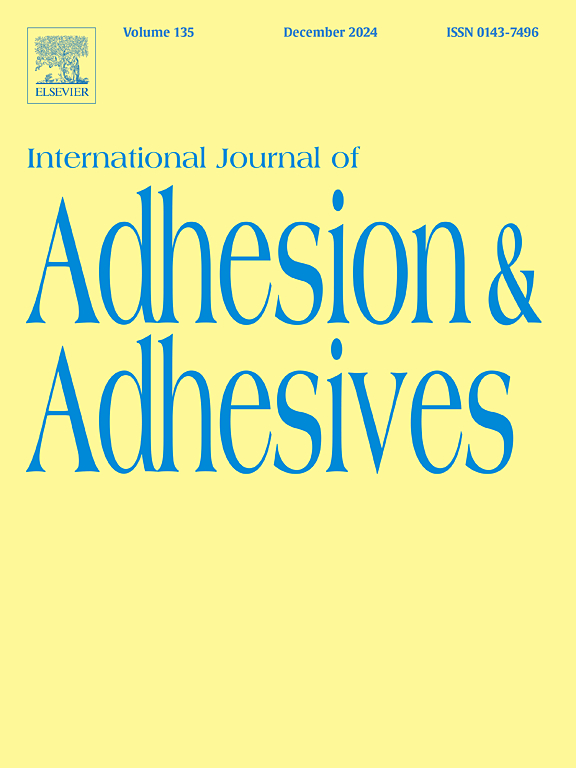Enhanced adhesion properties of hyperelastic adhesives to different nature substrates by applying different surface treatments
IF 3.2
3区 材料科学
Q2 ENGINEERING, CHEMICAL
International Journal of Adhesion and Adhesives
Pub Date : 2025-01-04
DOI:10.1016/j.ijadhadh.2025.103934
引用次数: 0
Abstract
This study investigates the effect of different surface treatments on the bond strength of hyperelastic adhesive joints. Plasma treatment and primer application were compared to sandblasting and sandblasting plus priming on aluminium and Glass-fibre Reinforced Polyester (GRP) surfaces. Results indicated that plasma treatment on aluminium surfaces increased shear strength values by 20 % compared to untreated surfaces and showed a shear strength comparable to primer application. However, on GRP surfaces, primer application improved bond strength by 10 %, while plasma treatment did not provide any significant enhancement. Plasma and primer treatments produce predominantly cohesive joint failure, while sandblasting and sandblasting plus priming produce large percentage of adhesive failure. Plasma treatment may serve as a good alternative to primer on aluminium surfaces, while primer remains preferred for GRP surfaces. The study concludes that the dispersive contact angle has a direct relationship with shear strength, where a 50 % decrease in dispersive contact angle results in a 10 % increase in shear strength. This suggests that substrate surfaces with a higher affinity for dispersive compounds would form stronger bonds.
求助全文
约1分钟内获得全文
求助全文
来源期刊

International Journal of Adhesion and Adhesives
工程技术-材料科学:综合
CiteScore
6.90
自引率
8.80%
发文量
200
审稿时长
8.3 months
期刊介绍:
The International Journal of Adhesion and Adhesives draws together the many aspects of the science and technology of adhesive materials, from fundamental research and development work to industrial applications. Subject areas covered include: interfacial interactions, surface chemistry, methods of testing, accumulation of test data on physical and mechanical properties, environmental effects, new adhesive materials, sealants, design of bonded joints, and manufacturing technology.
 求助内容:
求助内容: 应助结果提醒方式:
应助结果提醒方式:


